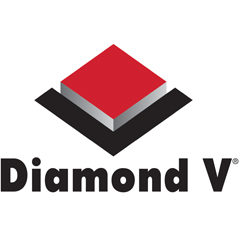The ideal cow is one that weans off a heavy calf each year, breeds back on time and doesn’t significantly add to the annual feed or vet bills. This ideology is based upon profitability being a function of outputs versus inputs. In lay terms, if the cow doesn’t meet the expectation of producing a live calf, producers are stuck with the same cost of production with no opportunity for revenue without culling her directly. Remember, reproductive success is non-life essential and lowly heritable. This means precision nutrition and management are the only factors a producer can control to produce a marketable calf crop each year.
Precision nutrition can be defined by providing the exact amount of nutrition required by the cow at the specific time needed. While the concept is simple, this philosophy is tough to implement because cow nutritional requirements fluctuate throughout the production cycle. Not to mention, many producers are developing their own replacements, and obviously their nutritional needs are much different than those of your favorite 6-year-old cow. Don’t forget that cattle are native animals, and because of a complex rumen microbiome, they’re designed to convert plant cellulose to protein products. That means the first step in precision nutrition is to get your forages tested. You might be surprised at the variability in forages. Fluctuations occur by location just as much as the season. Knowing what you have will help you make sound decisions on supplement needs. The other important factor in precision nutrition is knowing “what they need” and to balance accordingly. The cow’s production cycle has many biological processes that require different nutrients: energy, protein, vitamins, minerals and more.
Picture the production cycle from conception to calving. The first limiting factor in profitability is to achieve a pregnancy. During your breeding season, it is critical to make sure cattle are on a positive plane of nutrition. Science has shown that if thin heifers and cows are gaining weight, their chances of getting bred are in line with their adequately fleshed counterparts. Alternatively, fleshy females transitioning from high-quality winter feed to washy, wet grass may not physically be able to consume enough dry matter to meet their energy demands. It’s also important to provide cattle with a premium mineral program that provides enough phosphorus relative to your forage. Trace minerals such as copper, manganese and selenium are also essential. In fact, zinc is linked to testicular development in young bulls and is important for proper ovarian function in females. Make sure not to make any abrupt changes to their nutritional system until they’ve passed over one complete estrus cycle.
After the breeding season has concluded, this period represents the lowest nutritional requirement for your herd. Remember, precision nutrition is matching their needs with what you have available. Theoretically, feeding/grazing your highest-quality available forage during midgestation is a waste. However, health and management of stress is critical to sustain the pregnancy. A proper vaccination protocol for your herd in conjunction with stress management and mineral supplementation is key to animal health and performance. Some mineral programs even contain heat abatement technologies. If your cows are grazing instead of standing in the pond during extreme heat, their rumen pH is more stable, and animals are more spread out. Proper gut function and grazing “social distancing” help limit the spread of disease.
Fast-forward to the final trimester of the pregnancy, and nutritional requirements increase substantially. The cow must prepare for the rigors of parturition, as well as initiation of lactation. This is the time to ramp up energy and protein, like hooking up the battery charger to the tractor when you know you need it in the coming days. Don’t worry about calving trouble, either; with adequate nutrition and some extra vitamin E, the cows can better handle the stress of calving and repair the reproductive tract at a more efficient rate. Deficiencies in vitamin E can lead to increased incidences of retained placentas, which can have a substantial negative effect on getting that cow bred back on time next year.
The final trimester isn’t all about the cow, but proper nutrition leading up to calving can also prepare her calf for success. Think about how much time a feeder calf relies on nutrition from its dam from conception to consumption. Rapid fetal growth occurs during the final trimester, and numerous studies have proven that calves born from cows that were deficient in protein had reduced marbling scores and lighter carcass weights at harvest. Undernourished cows also produce poorer-quality colostrum, and if trace minerals such as zinc and selenium are deficient in the dam, transfer to the developing fetus won’t be sufficient. This can lead to weak calf vigor, more-expensive treatments and long-term health problems with the calf.
Collectively, nutrition is a huge variable determining profitability in beef production. Precision nutrition is a simple concept to understand but difficult to execute. I encourage all producers to find out what they have via forage testing and remember what the cows need relative to their current stage of production. Do your best to match the resources at the appropriate times, and you’ll have sustained success. You’ve invested a lot in your genetics, so give them every nutritional tool possible so they can function as the ideal cow.







